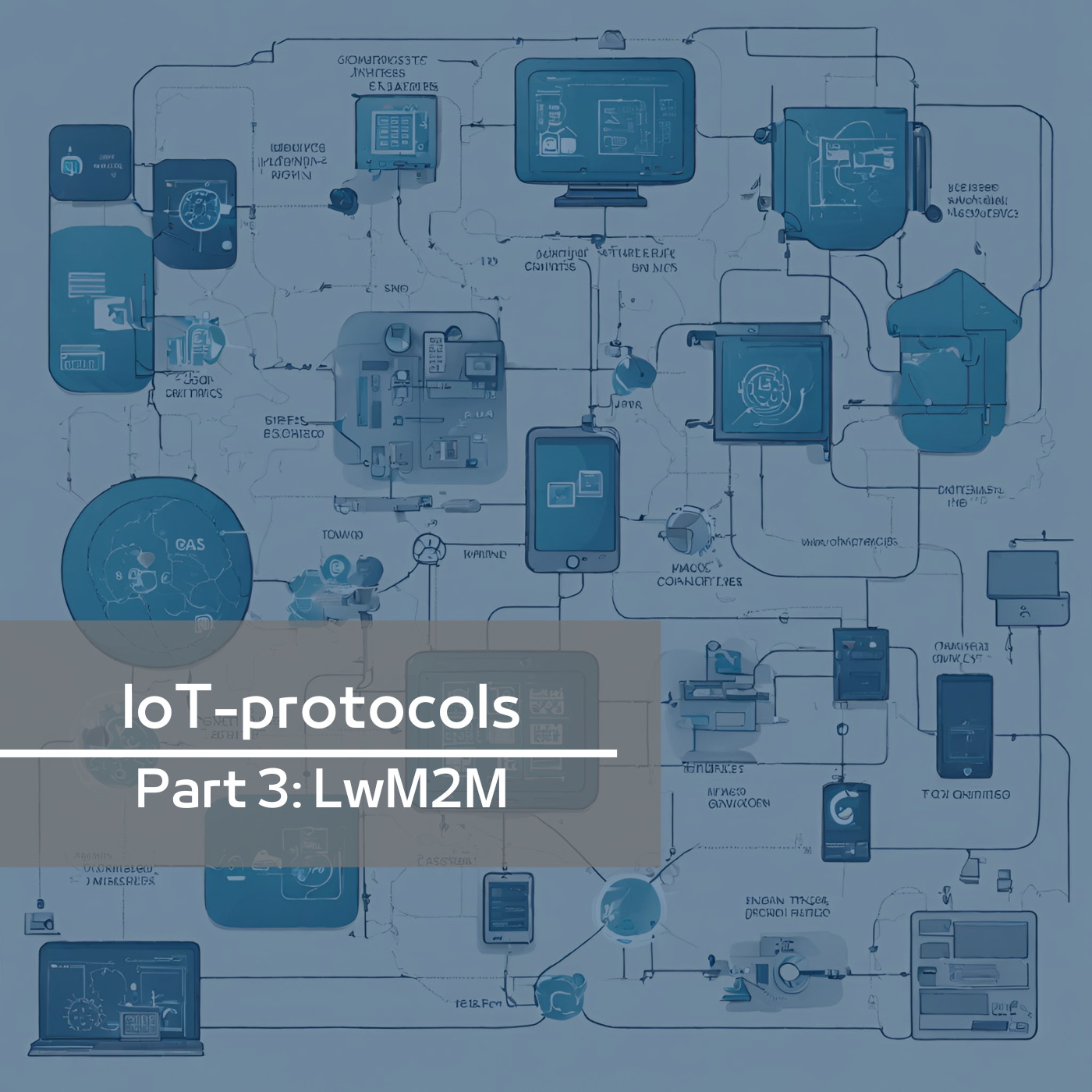In this final part of our blog series, we delve into the modern efficiency of Lightweight M2M (LWM2M), unveiling the cutting-edge technologies that are shaping the future of the Internet of Things.
LWM2M (Lightweight M2M)
LwM2M is a high level protocol dedicated to IoT device management specified by the Open Mobile Alliance. It can work over data protocol such as CoAP, MQTT, HTTP, SMS, or even Non-IP. LwM2M excels in LPWAN connectivity, where it offers a reliable and secure layer to manage IoT devices even in difficult network conditions.
I believe there is a significant advantage of this standard, and it is the integration of multiple protocols under one umbrella, stating this approach not only ensures robust security but also fosters an interoperable ecosystem. To me, interoperability is core within IoT; it is fundamental. The exchange of data between systems is what divides IoT from M2M, and even though many IoT devices share a data protocol, there is no open standard for the formatting of payloads, for example, and that can cause extra resources and increased time to market when developers have to adapt to new devices, or even to updated devices.
 For this article, I had valuable insights from Olivier Carmona, a recognized expert in IoT. With years of experience in the field, Olivier provides valuable insights into the evolution and impact of LwM2M on the IoT landscape. Olivier Carmona currently serves as the Vice President of Sales & Marketing at IoTerop. He advocates open standards such as LwM2M and participates as a board member at OMA SpecWorks, promoting innovation and interoperability in the IoT industry.
For this article, I had valuable insights from Olivier Carmona, a recognized expert in IoT. With years of experience in the field, Olivier provides valuable insights into the evolution and impact of LwM2M on the IoT landscape. Olivier Carmona currently serves as the Vice President of Sales & Marketing at IoTerop. He advocates open standards such as LwM2M and participates as a board member at OMA SpecWorks, promoting innovation and interoperability in the IoT industry.Energy consumption and efficiency
Energy consumption is a critical factor in many IoT applications. While anyone can create a custom IoT device management protocol using raw UDP, CoAP over UDP, or MQTT-SN without LwM2M and potentially achieve better energy efficiency, LwM2M is specifically designed to minimize power and data consumption for a versatile IoT device management. It provides a comprehensive solution encompassing secure installation, device recovery, firmware updates, and decommissioning. This makes LwM2M an excellent choice for energy-sensitive IoT deployments aiming for reliable and secure remote operation.
The architecture of LwM2M follows an object-oriented approach. Objects represent various features, including core functionalities like security, firmware updates, and connectivity, as well as application-specific features. LwM2M offers hundreds of objects tailored for numerous use cases, such as waste level sensors, air quality sensors, water meters, street light controllers, and more.
In interacting with the device, four main interfaces can be delineated:
- Bootstrapping Interface: This interface configures the device for production by first authenticating the manufacturer’s device certificate on a dedicated LwM2M server. After authentication, the production certificate and production server address are installed on the device.
- Client Registration Interface: This interface allows each client to declare and update the different available objects.
- Device Management and Service Activation Interface: This interface offers a means for the server to read data but also for the device to send object resources at its own pace.
- Information Reporting Interface: This interface allows to observe data resources according to various parameters, such as a refreshment period or logical operations on the resource or related resources. This flexibility enables versatile adaptation without the need for firmware updates. For example, you can set a daily refreshment frequency unless the battery falls below a specified threshold, in which case you can extend the refreshment interval to every three days.
Enhancements in LwM2M 1.2
The progression to LwM2M 1.2 marks a notable advancement, embracing DTLS 1. 2 (it is also in 1.0) and OSCORE to bolster transport security, thus making it more fitting for the diverse needs of IoT. Olivier Carmona points out the critical role of OSCORE in bringing end-to-end security by encrypting CoAP packets, compared to DTLS who stopped at gateways. Overall LwM2M commits to the highest security requirement in providing data encryption, but also offers seamless password management, and firmware update.
Another addition in this 1.2 version is a move to broaden its applicability by adopting MQTT, as a lower layer, challenging the misconception that it’s limited to CoAP. This inclusion allows add to MQTT a norm to define a device management where today, only proprietary implementation exists often imperfect in capability or even security. LwM2M adds to MQTT the capability in a standard operation to update firmware, to rotate certificate or to decommission a device.
The future landscape
Olivier Carmona envisions a dynamic future for LwM2M, with ongoing improvements and broader adoption in various industries beyond utilities. He also emphasizes the importance of managing not just device endpoints but also edge and industrial gateways. Open standards like LwM2M are crucial for fostering innovation and ensuring compatibility across diverse IoT devices and platforms.
The IoT landscape is continuously evolving, with LwM2M playing a crucial role in shaping its future. This mini-blog series was intended to give you insights into the protocol’s capabilities and its potential to drive significant advancements, not only by showing data from A to B but also to understand the importance of IoT device management and security.

